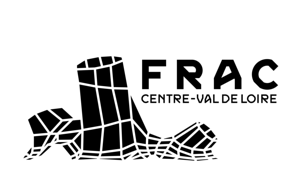Within the context of the 2022 Art and Architecture Biennale of Frac Centre-Val de Loire
September 16, 2022–February 5, 2023
88, Rue du Colombier
45000 Orléans
France
Hours: Wednesday–Sunday 2–7pm
presse@frac-centre.fr
“Writing a poem, or singing or dreaming it, means consenting to this unverifiable truth: that the poem in itself is contemporary to the first brasiers on Earth” –Édouard Glissant, Philosophie de la Relation, (Paris: Gallimard, 2009).
Subversive tenderness is the only statement with which we have learned, since 2019, not to stutter in the face of artworks that no longer resist the world as it is, but take the risk of a joyful radicality that finds its root in the “first brasiers on Earth” to give rise to a new world.
The encounter between these two terms (“tenderness” and “subversion”) imposes itself as the obvious conclusion to a long period of agony that, since the late nineteenth and early twentieth century, has attempted to oppose the cruelty of reality with the macho cruelty of the avant-garde. A race to destruction, an ode to warlike conquest, and all manner of desires never to be sated. Destroy art, so that art can be reborn from its ashes. Shock the bourgeoisie so that it finally jolts awake.
It must be admitted, in all honesty, that the task, as honourable as it is, was without impact to the point that it sustained for long decades the voracity of a world saturated by its copy. The world is still a weak world, and art, in many ways, seems destined to become “image”, after having been “commodity”.
Tenderness is the “quality of that which is tender; said of the youngest age”, Le Littré French dictionary tells us, and in a second definition of the term: “delicacy of forms”. To this second meaning, the dictionary cites Bossuet (Connaissance, IV, 2) “No chisel, no tower, no paintbrush can approach the tenderness with which nature turns and rounds off its subjects.” The dictionary specifies at this moment in the definition that it is a “Fine arts term. Formerly used for the softness, delicacy, and lightness of the paintbrush, or chisel.” For our purposes, it is essential to note that the acceptance of the word tenderness is not to be understood in its usual sense.
Everything hinges on the moment when the collision between the two terms “tenderness” and “subversion” becomes fertile, in the sense that subversion is connected to its natural origin, as is once again suggested in Le Littré. But what, then, does it mean to subvert? The term is etymologically derived from the Latin subvertere, from “sub”, beneath, and “vertere”, to turn. To act, below.
Here we arrive at the convergence of the paths. Infiltrating reality “underneath”, diverting its meaning, but with tenderness. Acting at the root and reminding oneself that radicality demands that we recall the first moments. Perhaps we could, as the philosopher Marie-José Mondzain invites us to do, “allow the visible to float in its indeterminacy, consent to hearing the plaintive or joyous murmur of things, perceive the countless unpredictable and contradictory vibrations of all that surrounds and supports us…” The exhibition attempts to pave the way for this new typology of art and architecture.
Artists: Ana María Arévalo Gosen, Alice Diop, Clarisse Hahn, Anne Houel, Anna Ponchon, Anila Rubiku, Takk (Mireia Luzárraga & Alejandro Muiño), Laure Tixier, Elvira Voynarovska, Madelon Vriesendorp & Teri Wehn-Damisch.
Curators: Abdelkader Damani.



